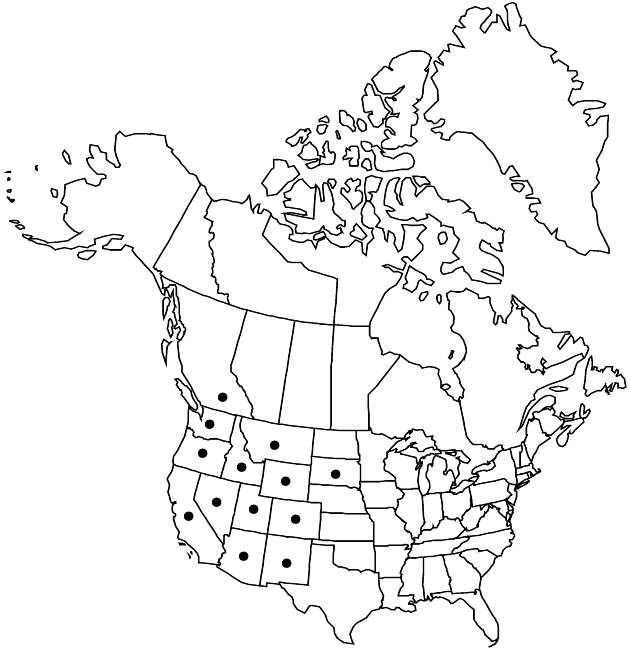Difference between revisions of "Chrysothamnus viscidiflorus subsp. lanceolatus"
Publ. Carnegie Inst. Wash 326: 181. 1923.
FNA>Volume Importer |
FNA>Volume Importer |
(No difference)
| |
Revision as of 18:43, 24 September 2019
Plants 20–50 cm. Stems greenish, hirtellous to puberulent. Leaf blades (ascending to spreading, lowermost sometimes deflexed) bright green (especially adaxially), 3- or 5-nerved, linear to lanceolate, 15–45 × 2–6 mm, usually not twisted or with a single twist, margins flat to ± undulate, eciliate or ciliolate, apices abruptly acute, abaxial faces usually hirsute to hirtellous, rarely glabrous, adaxial usually glabrous. Heads in small, compact, cymiform arrays. Involucres turbinate, 5–6.5 mm. Phyllaries 14–18 in 3–4 series, in spirals or vertical ranks, green subapical patches often lacking, midnerves evident distally or throughout, convex or ± keeled, oblong, unequal, margins scarious, eciliate or ciliolate, apices often rounded, apiculate, faces puberulent. Disc florets 5; corollas 5.5–6 mm, lobes 1–1.5 mm. 2n = 18, 36.
Phenology: Flowering summer–fall.
Habitat: Juniper/sagebrush savannas
Elevation: 1200–2500 m
Distribution

B.C., Ariz., Calif., Colo., Idaho, Mont., Nev., N.Mex., Oreg., S.Dak. Utah, Wash., Wyo.
Discussion
Subspecies lanceolatus is known in South Dakota only from Pennington County.
Selected References
None.